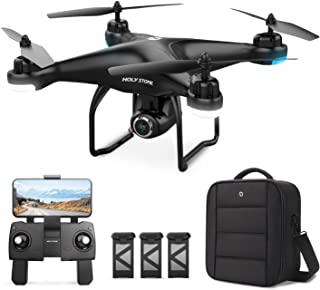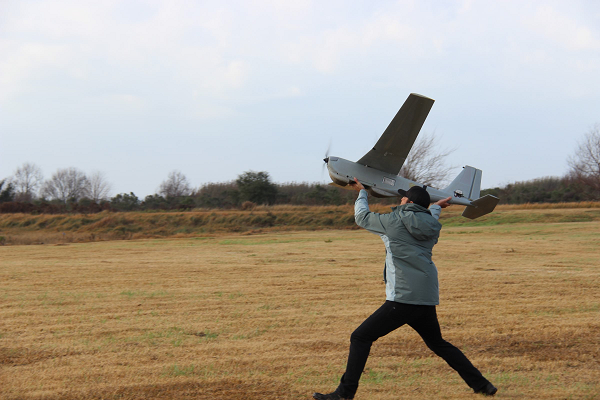
Drones can be described as unmanned aerial vehicles. They have been used in a wide variety of ways. In this article we will discuss drones mission, drone payloads, and the various applications of drones. Let's look at some of the key elements of a drones mission and how they calculate their trajectory. We'll then discuss how to calculate your mission, and how it can be applied to real-world situations. Here's how:
Overview of the drones mission
Drones were originally designed for military and aerospace applications. But they are now part of everyday life thanks to their improved safety and efficiency. They have three core mission capabilities: surveillance (targeted attacks), and reconnaissance. Advanced autonomy, which relies on LIDAR sensors and detectors, can perform the same work as a human pilot. Drones can, for instance, aid in hurricane recovery efforts.
Its stealth and suitability to the mission determine how a UAV performs its mission. If the UAV's mission calls for it to operate in an area that has radar, it must minimize the risk of being detected. The length of the UAV's legs is one of the safety concerns, but it is important to remember that its overall mission is also a function of its performance. This means maximising the UAV's turning angle, climbing/diving angle and minimising its flying altitude.
Calculation of drone mission
The speed at the which a drone flies depends on the task being accomplished. Calculating the flight time of your drone can be done by multiplying the shutter speed at maximum by the camera's inherent interval. These are some guidelines that will help you calculate flight speeds. Remember to factor in the flight time of your drone's batteries, as they can quickly run low on power. Your mission should be completed as quickly as possible.

This paper proposes an algorithm that has the highest convergence speed during the initial stages. It is however not local optimum due to its high convergence rate. The final roadmap shows two types UAVs arriving at their target point at the exact same time. This research aims at developing an efficient and precise method for mission planning. To aid you, we created a mathematical modeling model that solves the objective function (shortest path).
Payloads carried on drones
A drone's weight is its payload. Common payloads of drones are extra cameras, sensors, or packages that need to be delivered. The payloads of larger drones are typically heavier than those for commercial purposes. They also tend to be more costly than their cost. This article describes payloads, as well as how to determine the size. Payloads carry the most weight, but flight time is less important than payload capacity.
Different drones can carry different payloads. For instance, FPV and fixed-wing drones may only be used for photography. All drones are different in terms of payload capacity. However, they all have different weights and this can make them very versatile. Different drone types have different payloads and speeds. FPV drones are often considered hobbyist models, as their small props are not meant to carry anything other than video or still images.
Drones for commercial purposes
With the development of drone technology, companies are attempting to find practical applications for the craft. Drone delivery of goods to local retailers is one example. Amazon is a pioneer in this field and its patent activity is frequently newsworthy. Prime Air, Amazon's first commercial drone delivery service, made its first demo delivery in 2016. The company recently announced that it plans to roll out 30 minute or less deliveries for select Prime customers. Are there legal concerns?

Drones have been used in agriculture for years. A low-cost aerial photography is available to farmers for crop condition assessment. The drone can also be used for interior photographs. One company uses small UAVs for virtual walks-throughs that replicate the feeling of touring a house. Drones can also help property developers scan large tracts of land, helping them design structures to enhance the environment.
FAQ
What are the rules and regulations for drones operation?
Register your drone with the FAA. The registration process involves providing information about your drone, such as its weight, size, battery power, and frequency. It also requires you to obtain an identification number from the FAA.
Can my drone be flown around my neighbourhood?
Yes! These are also known as UAVs (unmanned aerial vehicle). There are several types of drones available for sale today, from small quadcopters to large fixed-wing aircraft. The FAA recently published new rules on commercial UAV usage, which allows you to legally fly them for commercial purposes. However, be aware that flying a UAV near airports may cause interference with air traffic control systems, and you must obtain permission from local authorities before operating one.
Does the FAA regulate drones?
The FAA oversees all aspects regarding drone operations, including safety standards and certification requirements.
What is the best drone for beginners?
The DJI Phantom 2 Vision+ beginner drone is very popular today. This model is equipped with a 4K cam, which allows for high-quality aerial photos as well as videos. This drone is easy to navigate thanks to its GPS system.
Can someone spy on you with a drone?
Yes, anyone can fly a drone and spy on you. It is important to be aware of drones and to avoid any areas they may fly. If you notice a drone flying around, call 911 immediately.
Do I need special training to fly a drone?
You don't require any special training to fly your drone. You just need a remote-control unit and basic knowledge in flight mechanics.
Traveling with a Drone?
Drones are becoming more and more popular for personal and professional use. They are used to film, fly, map, rescue and search and rescue. A number of new regulations have been approved by the FAA for drones. These include registration, licensing, pilot training and insurance. These changes will ensure that drones continue to be safe for all.
Statistics
- According to industry research from ZipRecruiter , there are 10 cities where the typical salary for a Drone Pilot job is above the national average. (dronesgator.com)
- Research and Markets predict a growth rate of 51.1% over the next five years. (thedroneu.com)
- According to ZipRecruiter, the minimum hourly wage of drone pilots is $20. (thedroneu.com)
External Links
How To
How to Fly Drones for Beginners
A drone is a remote-controlled aircraft used for aerial photography, cinematography, surveillance, scientific research, and hobby purposes. Drone technology has existed since World War II. However, commercial use began in 2010 when DJI released their Phantom series of quadcopters. There have been many drones made since then. These range from beginner-friendly drones like Parrot AR Drone 2.0 to more advanced multi-rotor craft like DJI Mavic Pro.
There are several ways to fly a drone, including;
-
Remote control - This method uses a control device attached to your hand, which enables you to steer the drone through its flight path. There are two types of controllers available: joysticks and on/off switches.
-
Manual Control – This method lets users remotely control the drone by using a smartphone app. You will need to keep track of where the drone is going and follow the directions from the app.
-
Autonomous Flight - This method involves leaving the piloting duties to the drone itself. It basically flies autonomously without any human intervention. A drone must have a builtin camera and sensors capable to capture images and other data.
-
Triggered flight - This is similar to manual control except that the pilot sets up a preprogrammed route and the drone follows the route until it reaches its destination. Once the programmed route has been completed, the drone returns to the base automatically.
-
Landing Gear: Some drones have landing gear that allows them safely to land in case they lose power or run low on battery.
-
Goggles - Pilots may wear goggles to shield themselves from flying debris.
-
Camera - Some drones can be equipped with cameras which enable you to capture photos from the sky.
-
Obstacles – Some drones have obstacle avoidance systems that stop them from colliding with obstacles.
-
Speed - Some drones can reach speeds of over 40 mph.
-
Battery Life - Most drones can last between 20 minutes to 3 hours, depending on how much power you're using.
-
Range - Depending on the model, some drones can travel up to 30 miles away.
-
Power source - Some drones need an external power source, while others use internal batteries.
-
Weight - Some drones are lighter than others, while some models can weigh as much as 4 pounds.
-
Size - The size of drones varies from small, easily carried devices to more substantial crafts that weigh in excess of 50 pounds.
-
Price – All drones fall into a price category. These range from expensive models that cost thousands to affordable options that start at 100 dollars.